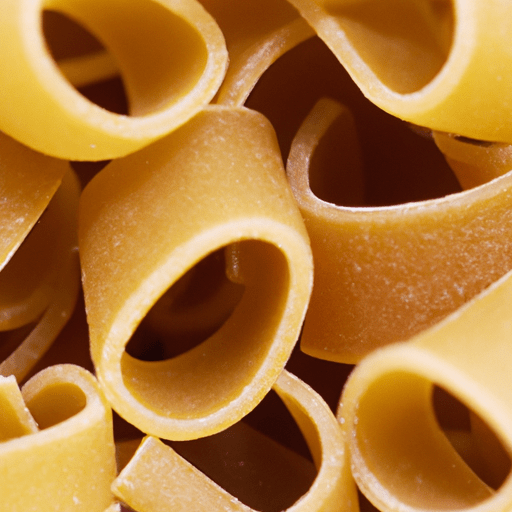Exploring Brown Rice Noodles: A Delicious and Nutritious Alternative
When it comes to exploring different types of noodles, don’t overlook the versatile and healthy option of brown rice noodles. These delicious strands, made primarily from brown rice flour, offer a wonderful alternative to traditional wheat-based noodles. In this blog post, we will take a closer look at brown rice noodles – from their taste and common uses in cooking to their nutritional value and fascinating history.
Taste and Texture
Brown rice noodles have a uniquely delicate and slightly chewy texture that sets them apart from other noodle varieties. While they may not have the same firmness as wheat-based noodles, their delightful softness adds a comforting element to any dish they are incorporated into. When cooked, they become tender and springy, making them an excellent choice for both stir-fries and soups.
In terms of taste, brown rice noodles have a mild flavor profile that pairs well with a wide range of ingredients. Their subtle nuttiness lends itself beautifully to both savory and sweet recipes, allowing chefs and home cooks to explore endless culinary possibilities.
Common Uses in Cooking
Due to their versatility, brown rice noodles are commonly used in various Asian cuisines. They are commonly found in dishes such as Pad Thai, Vietnamese Pho, and Singaporean laksa. Their ability to absorb flavors without overpowering them makes them an ideal canvas for both light and bold sauces, broths, and spices.
Beyond Asian cuisine, brown rice noodles can also be incorporated into a range of fusion and creative dishes. From cold noodle salads to stir-fries, spring rolls, and even noodle-based desserts, these noodles open up a whole world of culinary experimentation.
Nutritional Value
Apart from their delightful taste and versatility, brown rice noodles offer several health benefits. Unlike their refined counterparts, these noodles retain the germ and bran of the brown rice grain, providing additional nutrients and fiber. Here’s a glimpse into their nutritional value:
- Fiber: Brown rice noodles are an excellent source of dietary fiber, promoting healthy digestion and aiding in weight management.
- Vitamins and Minerals: They contain essential vitamins and minerals such as B vitamins, magnesium, and selenium, contributing to overall health and well-being.
- Gluten-Free: For those with gluten sensitivities or celiac disease, brown rice noodles are a fantastic alternative as they are naturally gluten-free.
Interesting Facts and History
Did you know that brown rice noodles have a rich history dating back thousands of years? These noodles, commonly known as “mei fun” in China, have been enjoyed as a staple food for centuries. They were traditionally handmade by skilled chefs who would carefully roll out the dough, cut it into thin strips, and dry them under the sun to preserve them.
In recent years, the popularity of brown rice noodles has surged due to increasing interest in whole grains and gluten-free alternatives. As global cuisines continue to gain traction, brown rice noodles have found their place not only in Asian kitchens but also in homes and restaurants worldwide.
Brown rice noodles are a fantastic option for those looking to add more variety to their noodle repertoire or seeking gluten-free alternatives. With their delicate texture, mild flavor, and endless culinary possibilities, these noodles are an excellent addition to any dish. Plus, the added nutritional benefits make them a nutritious choice for those looking to incorporate whole grains into their diet.
So why not give brown rice noodles a try? Whether you’re cooking up a traditional Asian dish or experimenting with new flavors, these noodles are sure to impress with their delightful taste and healthful attributes.
Brown Rice Noodles
Origin: Brown rice noodles, also known as rice vermicelli or rice stick noodles, are derived from brown rice, which is the whole grain form of traditional white rice. Brown rice originates from East Asia, particularly China and Japan, where it has been a staple food for centuries.
Common Uses: Brown rice noodles are a popular ingredient in various Asian cuisines, including Chinese, Thai, Vietnamese, and Malaysian. They are commonly used in stir-fries, soups, spring rolls, salads, and noodle dishes, such as pad Thai and pho.
Nutritional Benefits: Brown rice noodles are considered a healthier alternative to regular wheat noodles. They are naturally gluten-free, making them suitable for individuals with gluten sensitivities or those following a gluten-free diet. Additionally, they are a good source of dietary fiber, essential minerals like magnesium and manganese, and B vitamins.
Unique Properties: Brown rice noodles have a distinct texture and taste compared to wheat or white rice noodles. They have a slightly chewy texture and absorb flavors well, making them a versatile ingredient in various dishes. Brown rice noodles also tend to have a darker color and a nuttier flavor due to the presence of the rice bran.
Historical Significance: Rice noodles, including brown rice noodles, have a long and rich history in Asian cuisine. They have been used since ancient times and have become an integral part of traditional dishes across different cultures. The methods of making rice noodles have evolved over the years, with different regions having their own variations and techniques for preparing and cooking them. Today, brown rice noodles continue to be a popular and healthy choice for those looking to incorporate whole grains into their diet.




Use the share button below if you liked it.
It makes me smile, when I see it.